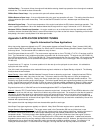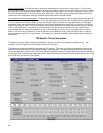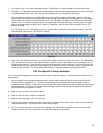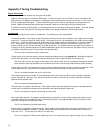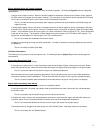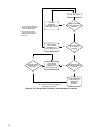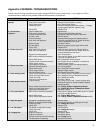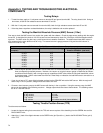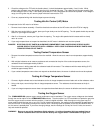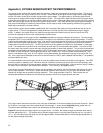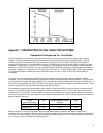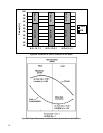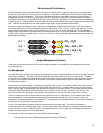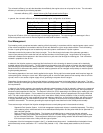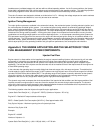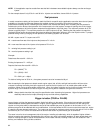75
3 - Check the voltage on the TPS with the throttle closed. It should be between approximately .3 and .8 volts. While
watching the voltmeter, move the throttle lever from fully closed to fully open. The voltage should change smoothly from
the idle voltage to 4.5-5.0 volts. If the reading fluctuates, the TPS is intermittent and should be replaced. If the voltage is
range, turn the ignition key off, remove jumper wires and reconnect the TPS.
4 - Cover any exposed wiring with electrical tape to prevent shorting.
Testing Idle Air Control (IAC) Motor
A simple test for the IAC motor is as follows:
1 - Remove the air cleaner assembly. Check the electrical connections at the IAC motor and at the ECU for integrity.
2 - With the warm engine idling in neutral, place your finger slowly over the IAC opening. The idle speed should drop and the
suction on your finger will increase.
3 - After 5 or 10 seconds, remove your finger from the opening. The engine idle speed should increase and then slowly
return to normal.
4 - If your engine speed does not respond as described, the IAC motor is defective and must be replaced.
DANGER! ROTATING OR HOT PARTS IN AN ENGINE COMPARTMENT CAN CAUSE BURNS, SERIOUS INJURY
AND/OR DEATH IF CONTACTED WITH A PERSON. KEEP LOOSE CLOTHING AND BODY PARTS AWAY
FROM ROTATING OR HOT PARTS.
Testing Coolant Temperature Sensor
1 - Remove the coolant temperature sensor from the manifold. Allow the sensor to reach room temperature, approximately
70° F.
2 - With a digital voltmeter set to measure resistance and connected to the pins of the coolant temperature sensor, the
resistance should read approximately 3,800 Ω.
3 - Place the sensor in boiling water with the voltmeter leads still connected. The resistance with the water boiling (212 F)
should be approximately 182 Ω.
4 - If your coolant temperature sensor does not respond as described above, the sensor is defective and must be replaced.
Testing Air Charge Temperature Sensor
1 - Connect a digital voltmeter set to read resistance to the air charge temperature sensor leads and not the resistance value.
2 - Using a hair dryer, warm the tip of the air charge temperature sensor. The resistance should decrease as the tip is
heated.
3 - If your air charge temperature sensor does not respond as described above, the sensor is defective and must be replaced.
Testing the Oxygen Sensor
The COMMANDER 950 systems oxygen sensor performance can be evaluated. The oxygen sensor voltage can be checked
through the monitor option of the COMMANDER 950 software. The other option if no PC is available is to probe the gray wire
from the oxygen sensor connector with the positive (+) lead of a digital voltmeter. With the engine running open-loop, the
meter reading should be near zero or one volt. During closed-loop operation, the readings should constantly change between
zero and one volt. If the reading is always zero volts, be sure +12V and ground are present on the RED and BLACK wires. If
so, the sensor is probably bad. If you see a changing voltage, but the readings do not vary far from 0.5 volts, the sensor is
lazy and should be replaced.
WARNING! Be sure to use a high impedance digital voltmeter. An older style analog (dial type readout) has an
internal resistance that is too low and will destroy the oxygen sensor if connected to the gray wire.



